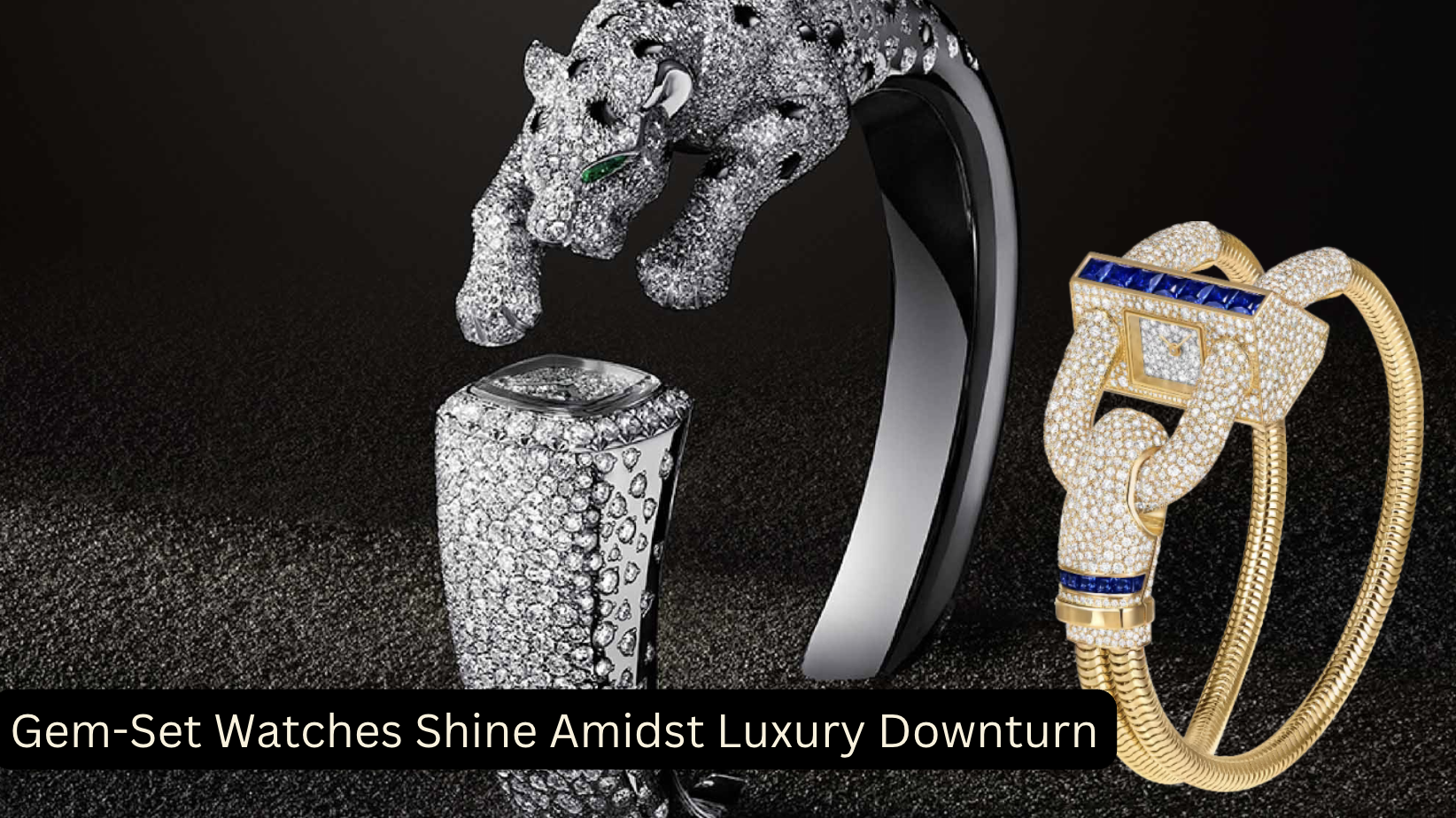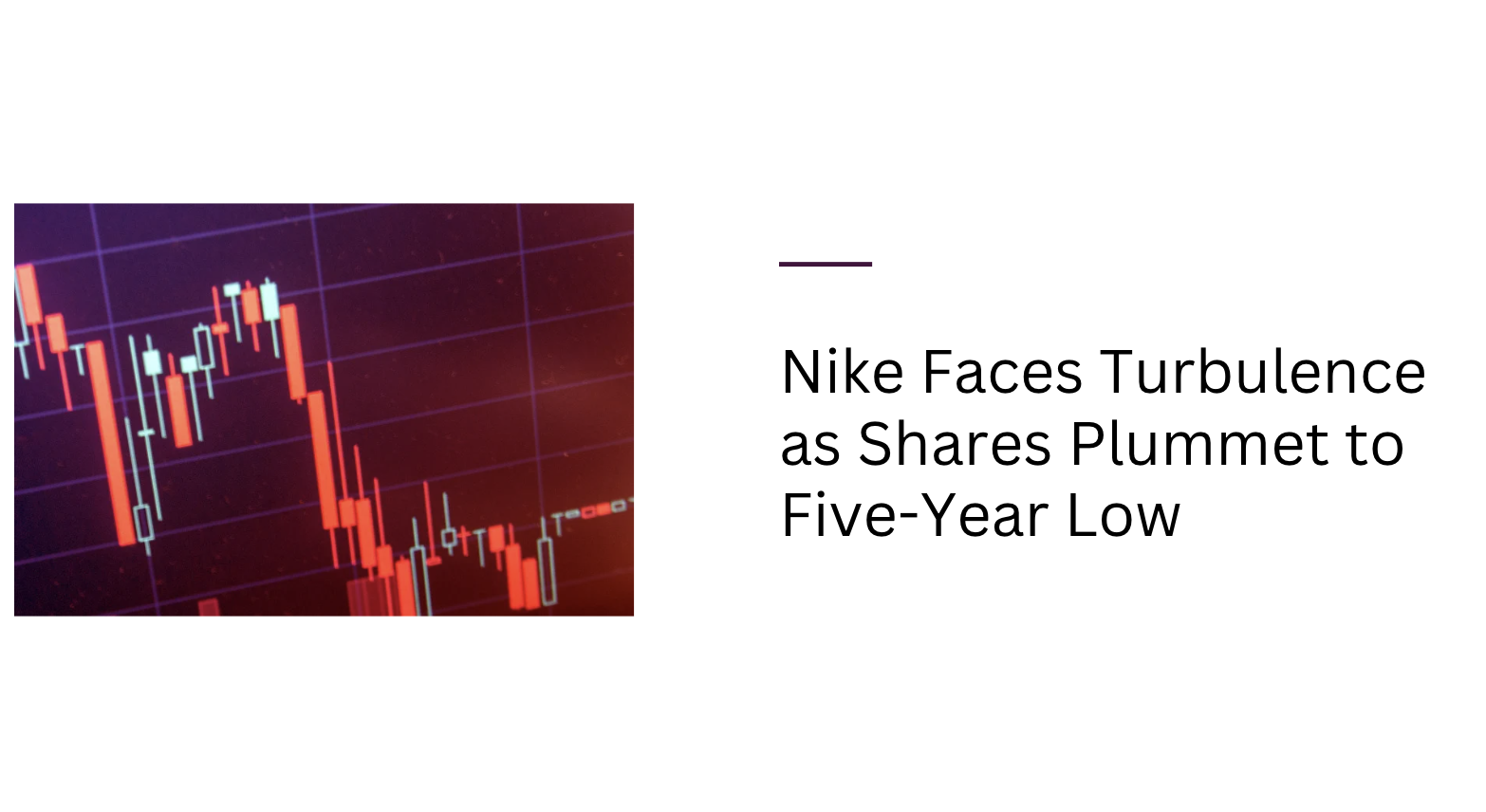
What Prada's Acquisition of Versace Means? An Analysis of the $1.4 Bn Deal Amidst Market Instability
Prada has announced the acquisition of Versace for 1.25 billion euros ($1.38 billion), marking a significant strategic move in the luxury fashion industry. This deal positions Prada to enhance its competitiveness against major French luxury groups like LVMH and Kering. By integrating Versace, known for its bold and distinctive designs, into its portfolio alongside brands like Miu Miu and Church’s, Prada aims to broaden its appeal and market presence. The acquisition comes at a time of economic uncertainty, fueled by fluctuating tariffs that threaten the global luxury market. For Capri Holdings, the sale allows a refocused effort on revitalizing its core brand, Michael Kors. This transaction represents a significant development in affirming the value of “Made in Italy” and sets a new course for both Prada and Versace in the luxury sector.
#prada, #luxurymarket, #versace, #miumiu, #acquisitions, #michaelkors, #capriholdings

Trade Tensions Dampen 2025 Luxury Market Outlook
The escalating trade war between the US and China is casting a shadow over the luxury market’s hopes for a rebound in 2025. With both nations increasing tariffs, the luxury sector faces a projected 2% decline in revenue, reversing earlier growth forecasts. This economic strain is intensified by shaky consumer confidence and the unpredictability of trade policies. While most luxury brands are expected to experience downturns, Hermès remains an exception, likely to maintain its growth trajectory. The industry braces for a challenging year, with the broader economic implications of these tariffs adding to the uncertainty.
#LuxuryMarket, #TradeWar, #USChinaRelations, #EconomicImpact, #LuxuryBrands, #MarketForecast, #Hermes, #FashionIndustry, #GlobalEconomy, #ConsumerConfidence

Warren Buffett’s Strategic Mastery Unveiled in Recent Market Downturn
Warren Buffett’s strategic foresight is showcased during the recent stock market turmoil. Amidst a raging bull market, Buffett wisely reduced Berkshire Hathaway’s Apple shares and built up a $334 billion cash reserve, a move proven prudent as market conditions shifted dramatically due to new tariffs impacting global trade. While many sectors suffered, Berkshire’s diversified investments in more domestically-focused industries like insurance and energy helped its shares rise by 9% this year, in contrast to the overall market’s downturn. Buffett’s approach highlights the importance of strategic asset allocation and market anticipation.
#WarrenBuffett, #berkshirehathaway

The Week That Was | A Tumultuous Journey Through Global Markets
Last week was marked by significant upheaval in global financial markets due to shifting U.S. trade policies. Key developments included major pension funds halting investments in U.S. assets due to geopolitical instability, a dramatic sell-off in U.S. Treasuries that questioned their status as a safe haven, and a significant surge in gold prices as investors sought more stable assets. These shifts underscore a growing global apprehension about the U.S. as a reliable investment destination, prompting a strategic rethink among large institutional investors.
#FinancialMarkets, #Tariffs , #InvestmentStrategy, #GoldSurge, #MarketVolatility, #tariffsimpact

Understanding the Shift in Private Equity Investments | Big Investors Seek Exits Amid Market Downturn
In light of recent financial turmoil, a Financial Times report reveals that large institutional investors like pensions and endowments are considering selling their stakes in private equity funds. This trend is a reaction to the significant losses these funds have experienced, compounding the challenges within the $4 trillion buyout industry. As market conditions destabilize, the private equity sector faces one of its most critical periods, with reduced deal-making and the “denominator effect” forcing reevaluation of investment strategies.
#PrivateEquity, #FinancialMarkets, #InvestmentStrategy, #MarketDownturn, #BuyoutIndustry

Breaking Barriers or Facing Barriers? Hailey Bieber’s Rhode at the Crossroads of Beauty M&A
Case Study | Hailey Bieber’s Rhode at the Crossroads of Beauty
M&A Hailey Bieber’s beauty brand, Rhode, is exploring sale options with a bold $1 billion valuation, guided by J.P. Morgan and Moelis. Amid a slowdown in beauty M&A, Rhode’s success in generating $200 million in sales positions it as a significant player. However, the brand’s total online presence and reliance on a celebrity founder may deter potential strategic buyers. The outcome of Rhode’s efforts could be a litmus test for the feasibility of high-valuation deals in the celebrity-driven beauty sector amidst a cautious market environment.
#BeautyBusiness, #HaileyBieber, #MandA, #RhodeBeauty, #CelebrityBrands, #casestudy, #CaseStudyRhode

A Strategic Embrace of Heritage Amidst Economic Challenges in the Luxury Watch Sector
Amid economic uncertainties, luxury watch brands are refocusing on iconic and traditional designs. This strategic shift toward time-tested classics is a response to the current market slowdown, mirroring historical trends where reliable and esteemed models sustain consumer interest during downturns. Brands are emphasizing their heritage and quality, which resonates with consumers across various demographics and maintains market strength. This return to foundational values and impeccable craftsmanship is central to navigating the industry through turbulent times and setting the stage for future resilience and growth.
#LuxuryWatches, #WatchesAndWonders2025, #TimelessDesign, #WatchIndustry, #EconomicTrends, #HeritageBrands, #Craftsmanship, #MarketResilience, #ConsumerBehavior, #LuxuryMarket

Gem-Set Watches Shine Amidst Luxury Downturn
Gem-set watches are taking center stage at this year’s Watches and Wonders fair, despite a broader downturn in the luxury goods market. According to a recent report by Bain & Co., jewelry remains a resilient category, with significant growth reported by major houses like Richemont and impressive performances by brands such as Cartier and Van Cleef & Arpels. High-end watchmakers are integrating precious materials and intricate designs, blending the boundary between timekeeping and fine jewelry. This trend underlines the enduring appeal of investment-worthy luxury items that combine both beauty and functional prestige.
#WatchesAndWonders, #LuxuryWatches, #JewelryTrends, #InvestmentPieces, #HighEndJewelry, #Cartier, #VanCleefArpels, #BainCo, #LuxuryMarket, #GemSetWatches

Private Investment Platforms Lower Entry Barriers
EquityZen and Forge Global, platforms for trading shares of private companies, have reduced their minimum investment amount to $5,000, making private equity more accessible to individual investors. This move, highlighted in a recent Wall Street Journal article, aims to democratize investment opportunities in high-growth companies. The firms have also partnered with Yahoo Finance to increase market transparency by sharing data on roughly 100 pre-IPO companies.
#PrivateEquity, #InvestmentOpportunity, #FinancialMarkets, #WSJ, #EquityZen, #ForgeGlobal, #PreIPO, #YahooFinance

Case Study | Birkenstock’s Evolution - Navigating Heritage and Modern Market Challenges
Birkenstock, a heritage brand rooted in craftsmanship since 1774, has recently undergone significant changes following its acquisition by L Catterton and its IPO debut. While the company has shown revenue growth and global expansion, declining profit margins and a growing reliance on marketing-led strategies signal a shift from its original values. With new product categories and high-fashion collaborations entering the mix, the brand now faces the challenge of balancing modern market demands with the authenticity that built its legacy.
#Birkenstock, #HeritageBrand, #IPO, #LuxuryBusiness, #PrivateEquity, #LCatterton, #BrandStrategy, #MarketingVsCraftsmanship, #BrandEvolution, #FashionIPO, #PublicMarkets

A Stitch in Time - VEJA & The Sashiko Gals Collaboration
Case Study | A Stitch in Time - VEJA & The Sashiko Gals Collaboration
Most collaborations today are just noise. A marketing push, a hashtag, a fleeting moment on social. But every now and then, a project emerges that reminds us what collaboration should look like: thoughtful, rooted in culture, and built to last.
VEJA’s limited-edition partnership with the Sashiko Gals collective is one such example. Only 10 pairs of the Panenka sneaker were available at Dover Street Market Ginza, Tokyo on March 28–29, 2025.
Each one uniquely hand-embroidered using sashiko — a centuries-old Japanese stitching technique traditionally used to repair and reinforce garments. The collective, based in Ōtsuchi (a town in northern Japan deeply impacted by the 2011 earthquake), is made up of 15 women aged 40 to 80, who’ve turned their craft into an act of resilience, preservation, and community support. In this era of high-volume product drops, this is low-quantity, high-intention design.
A reminder that collaboration is not just about co-branding — it’s about co-creating with purpose.
#VEJA, #SashikoGals, #Craftsmanship, #SustainableFashion, #FashionCollaboration, #DoverStreetMarket, #TokyoDrop, #Sashiko, #CulturalPreservation, #HeritageCraft

Rising Stars | How Private-Label Beauty Products Are Winning Over Consumers
Private-label beauty products are witnessing a significant rise in popularity, driven by a shift in consumer demographics and economic factors. Younger consumers, especially Gen Z and Millennials, are exploring more diverse beauty options and prioritize value beyond price. Economic uncertainties have traditionally boosted private-label sales, but today’s growth is also fueled by a deeper consumer understanding of product quality and attributes. Retailers like Ulta Beauty, Walgreens, and Mecca are responding by enhancing their private-label offerings with innovative and high-quality products that appeal to both high-income and value-seeking customers. This strategic positioning helps differentiate these brands in a competitive market, promising continued growth in the private-label beauty sector.
#PrivateLabelBeauty, #ConsumerTrends, #RetailInnovation, #BeautyIndustry, #EconomicImpact, #GenZConsumers, #MillennialMarket, #RetailStrategy

Klarna Tests Investor Confidence with IPO Amid Market Volatility
Klarna, a leading Swedish fintech company, has filed for an IPO on the NYSE under the ticker “KLAR”, despite current market instability. The company, valued at up to $15 billion, has rebounded to profitability with a net profit of $21 million in 2024 after facing significant valuation drops. This IPO marks a significant moment for the fintech industry, reflecting resilience amidst economic uncertainties and a potential shift in investor sentiment towards the sector.
#Klarna, #IPO, #Fintech, #NYSE, #MarketVolatility, #InvestorConfidence, #ProfitRecovery

Nike Faces Sales Decline Amid Global Challenges
Nike’s shares have reached a five-year low as the company struggles with a challenging global environment marked by tariffs and consumer caution. The sportswear giant reported a significant drop in sales, particularly in its Jordan brand and classic footwear lines, contributing to a “mid-teens” percentage decline in revenue projections for the upcoming quarter. This decline in performance is further exacerbated by a strong U.S. dollar and unfavorable shipment timing in North America. Despite a positive holiday season, external factors such as geopolitical tensions, new tariffs, and volatile exchange rates have dampened expectations. The company is actively working to shift strategies and boost investment to regain its market position against rivals like Adidas and emerging brands like On, Hoka, and Lululemon.
#Nike, #Finance, #StockMarket, #Athleisure, #Tariffs, #GlobalTrade, #ConsumerGoods, #MarketTrends, #EconomicImpact, #BrandStrategy

Richemont Moves to Disband Specialist Watchmakers Maisons Division
Richemont is reportedly disbanding its Specialist Watchmakers Maisons (SWM) division, which manages several high-profile watch brands. This move, aimed at decentralizing decision-making and enhancing relationships with retail partners, could significantly affect the luxury watch market. Emmanuel Perrin, head of SWM, is set to lead Panerai, signaling a shift towards more brand-specific strategies and market adaptability.
#Richemont, #LuxuryWatches, #WatchIndustry, #BusinessStrategy, #RetailPartnerships, #BrandManagement, #MarketAdaptability

Case Study | Inditex’s Strategic Triumphs in 2024: A Blend of Innovation and Global Growth
Inditex has showcased a remarkable performance in 2024, with a 10.5% increase in sales and significant advancements in both store optimization and digital integration. The company’s commitment to sustainability is evident in its use of lower-impact textile fibers and investment in innovative technologies. Inditex continues to enhance customer experiences through new tech implementations and the launch of exciting new collections across its brands, positioning itself strongly for future growth in the highly competitive global market.
#Inditex, #RetailInnovation, #SustainabilityInFashion, #DigitalIntegration, #FashionRetail

Phoebe Philo’s Bold Experiment | Redefining Luxury Fashion with Strategic Independence
Phoebe Philo’s return to the fashion industry with her brand, backed by LVMH, is redefining luxury fashion through strategic independence and minimalistic marketing. Operating as a startup but with access to vast resources, Philo has managed to captivate the fashion world with just two collections. Despite LVMH’s history of struggles in launching non-beauty brands from scratch, Philo’s venture is thriving, blending her unique vision with selective distribution and potential expansion plans. The approach could signal a new era where fashion emphasizes exclusivity and curated experiences over widespread availability.
#PhoebePhilo, #LuxuryFashion, #FashionIndustry, #LVMH

The M&A Landscape: Navigating Through Economic Uncertainty
Despite expectations of a bustling M&A market for this year, the reality has been subdued. High-profile deals have occurred but are rare in an environment where consumer confidence is faltering. There is significant volatility, and its affecting stock markets and corporate earnings negatively. However, the large number of companies needing exits from private equity portfolios and a demand for strategic acquisitions could still drive M&A activity. For this to happen, executives need predictable economic policies to navigate the uncertain terrain effectively.
#M&A, #InvestmentBanking, #EconomicUncertainty, #ConsumerConfidence, #StockMarket, #CorporateEarnings, #PrivateEquity, #StrategicAcquisitions

Alphabet’s Bold Move: A $3.2 Billion Gamble on Wiz Acquisition
Alphabet Inc., the powerhouse behind Google, recently made headlines with its bold $32 billion bid to acquire cybersecurity startup Wiz. This move, marking the largest acquisition attempt by Alphabet, comes with a notable twist—a staggering $3.2 billion break fee if the deal falls through.
The hefty break fee, constituting about 10% of the total deal value, this fee is significantly higher than the typical 2-3% usually seen in less contentious deals, highlighting the anticipated regulatory challenges.
As Alphabet and Wiz brace for the possible storms ahead, this acquisition will be watched closely. This deal could set precedents for future acquisitions and how companies might structure them to safeguard against regulatory uncertainties.

The AI Investment Boom | A New Era in Venture Capital
The U.S. venture capital scene is experiencing a major investment surge in 2025, largely driven by the burgeoning field of artificial intelligence (AI). With more than $30 billion invested in tech startups this quarter, there is a noticeable shift towards channeling funds into established giants like OpenAI. This trend signifies a move from the traditional diverse investment model to one that focuses on a handful of high-potential companies. As the venture capital industry evolves, it faces a crucial decision: whether to continue supporting wide-ranging innovation or concentrate on supercharging a few market leaders.